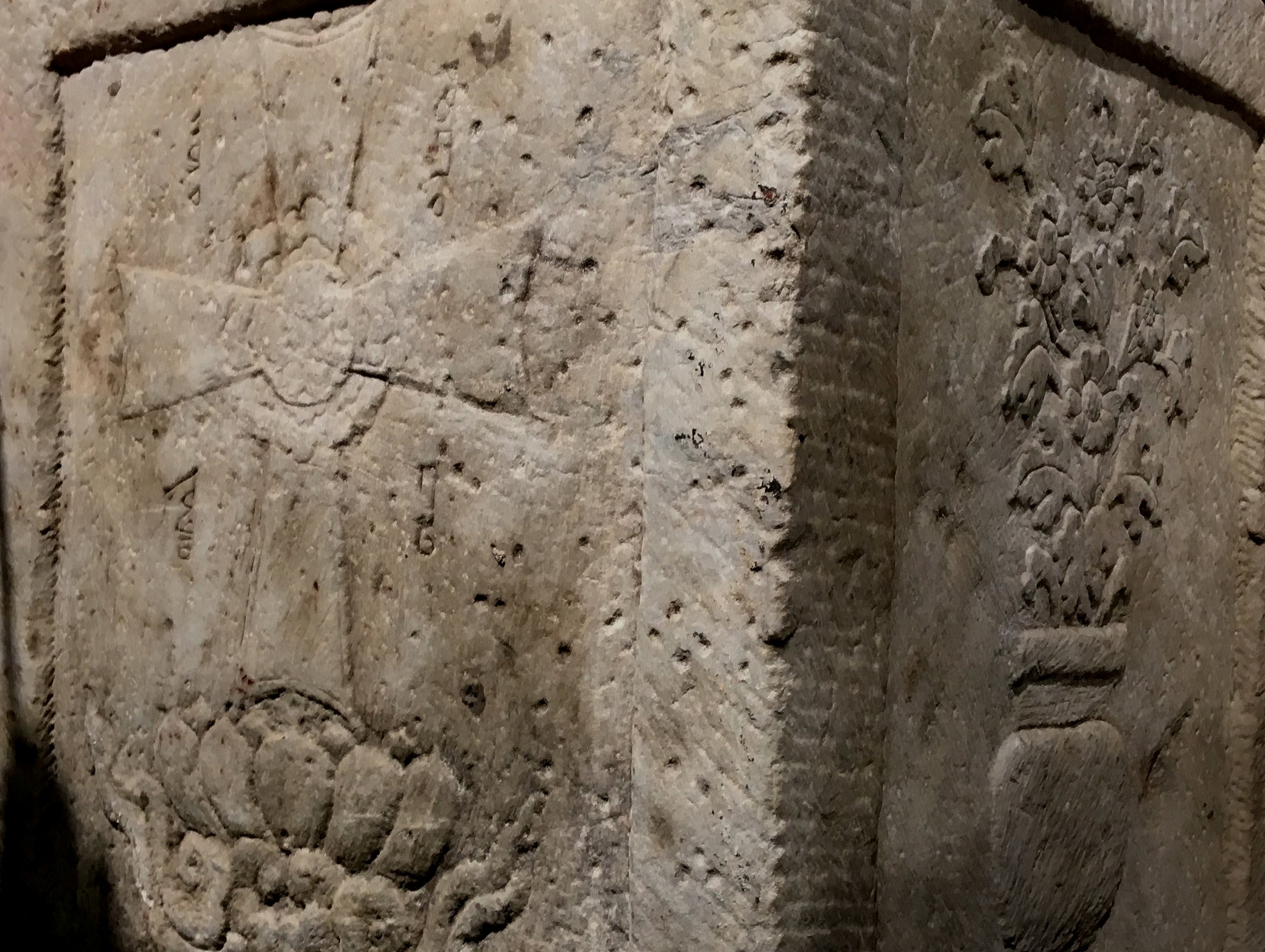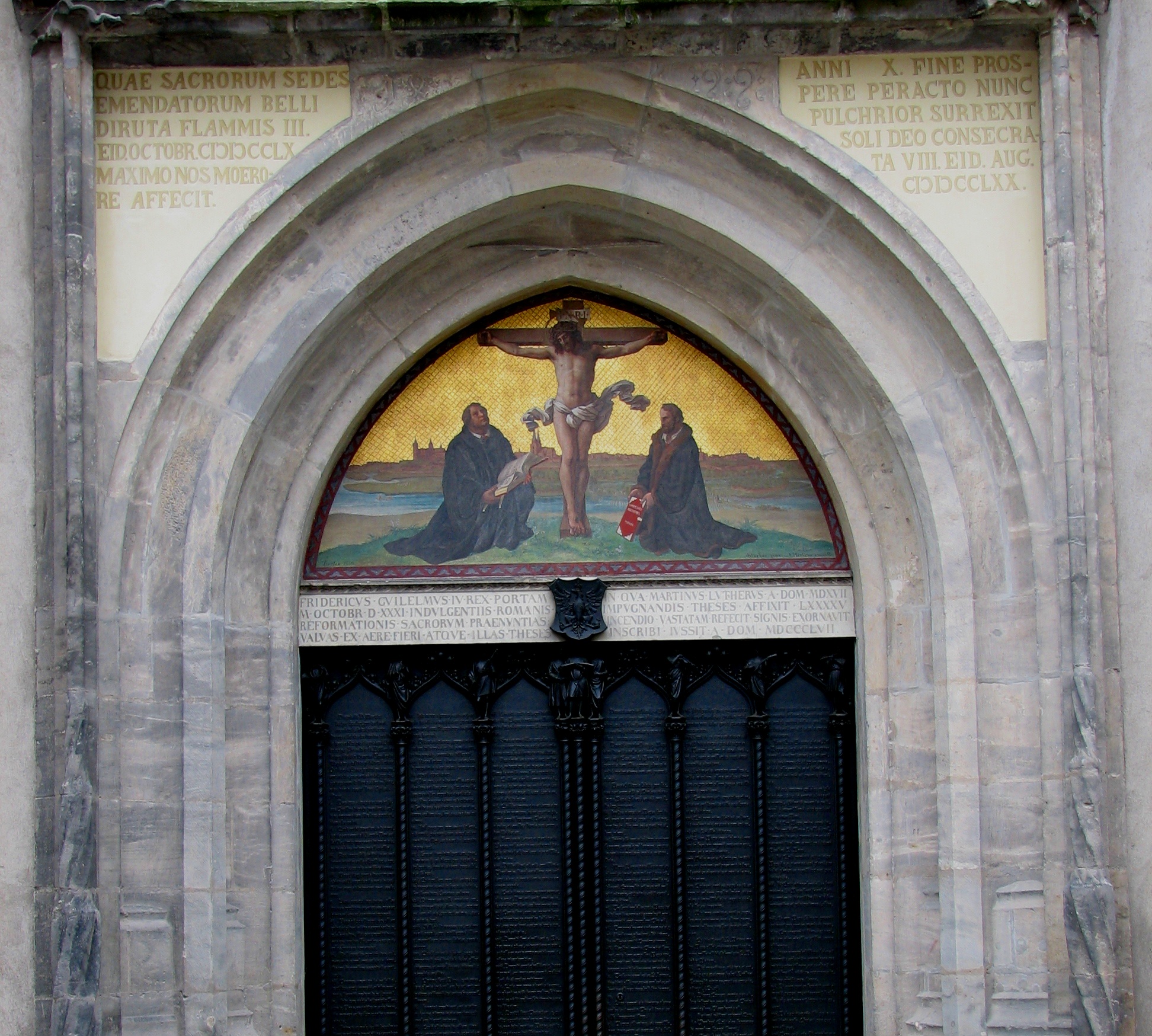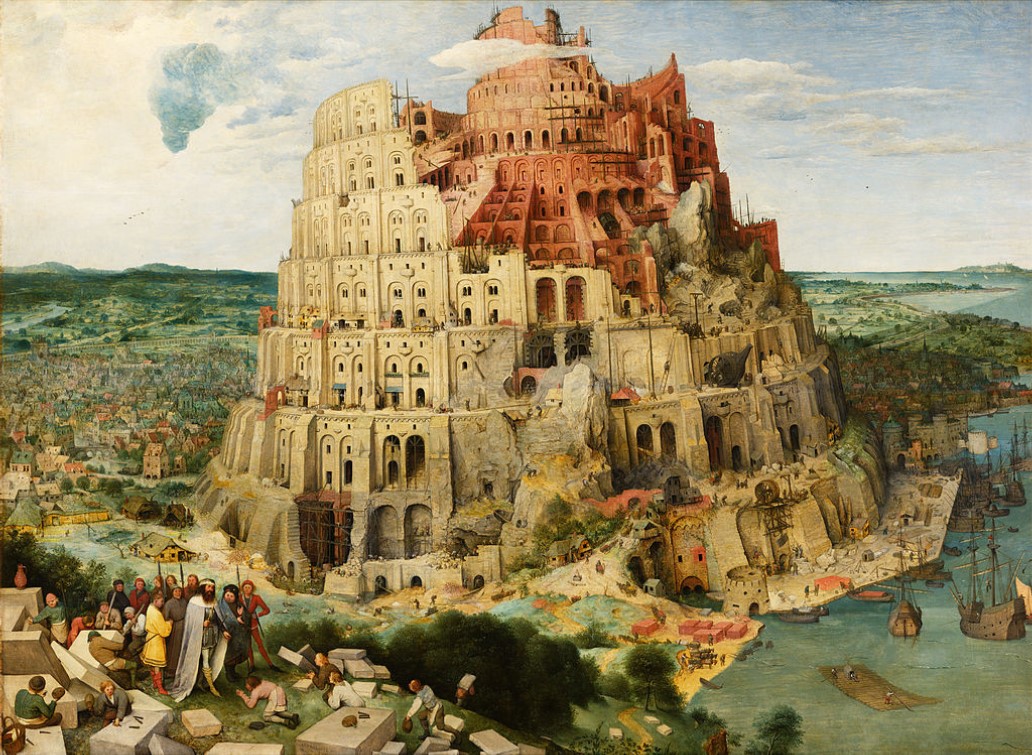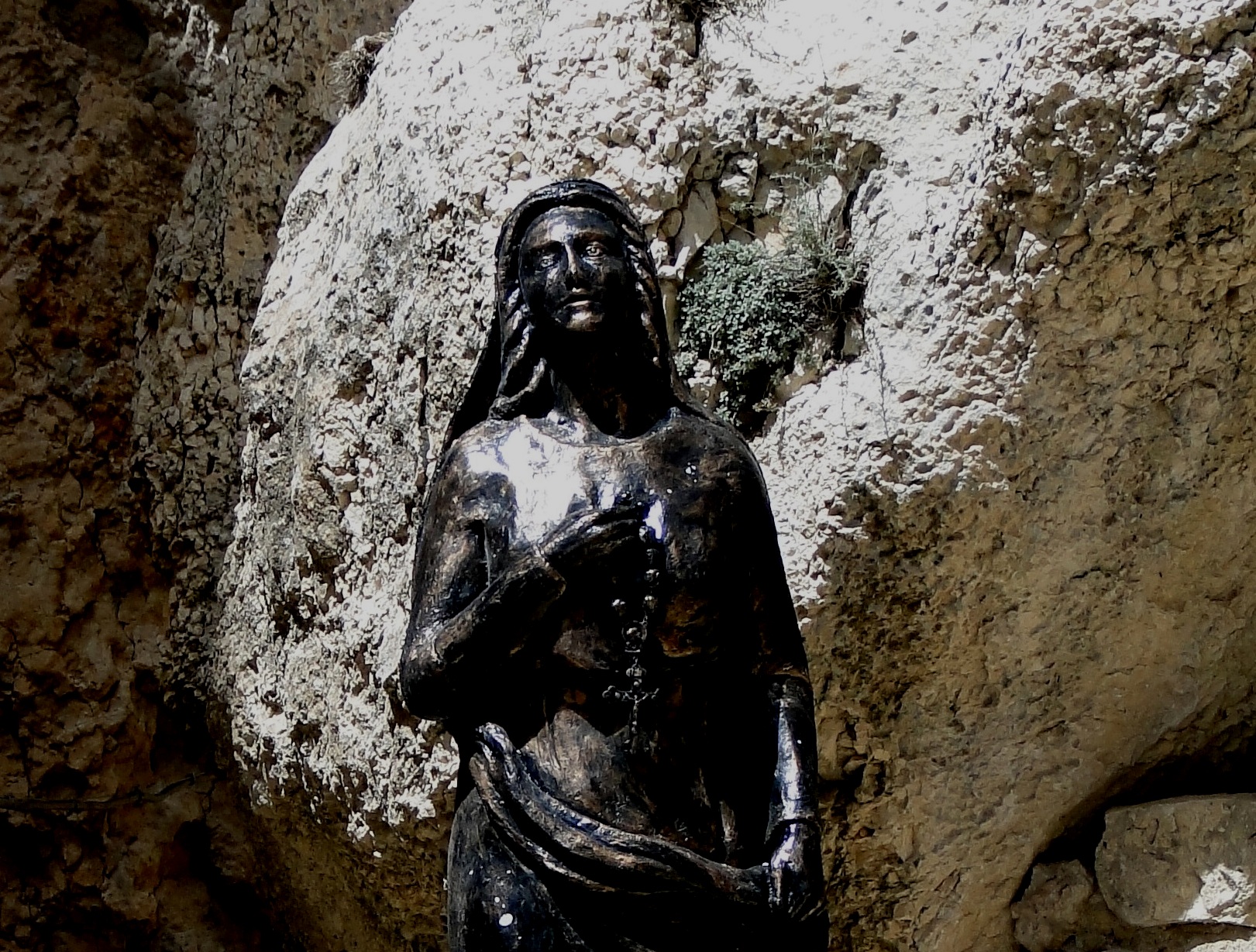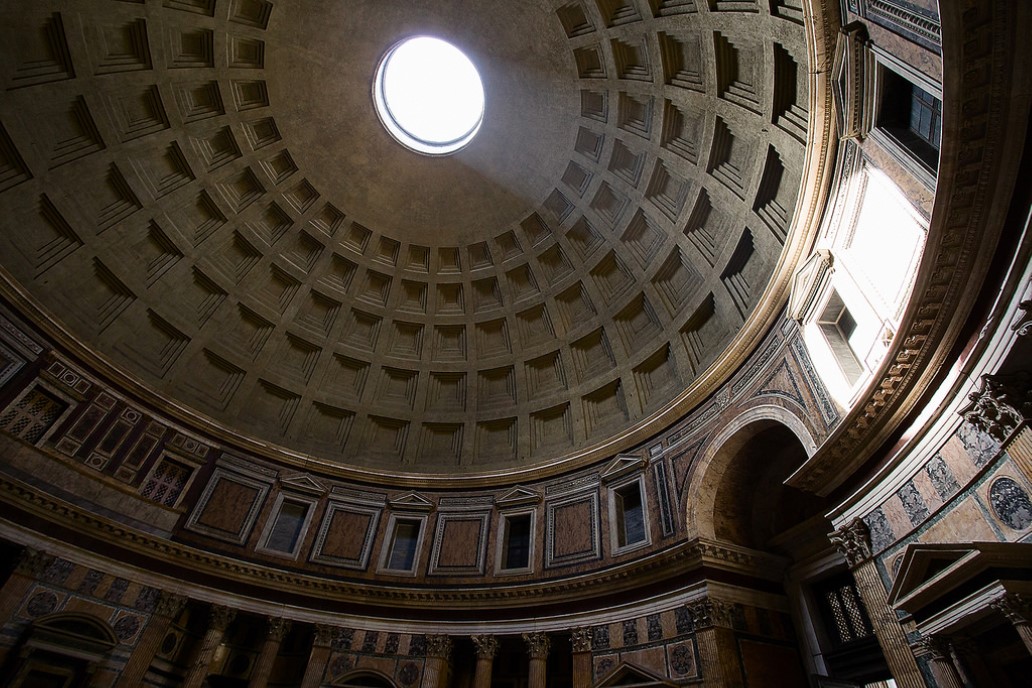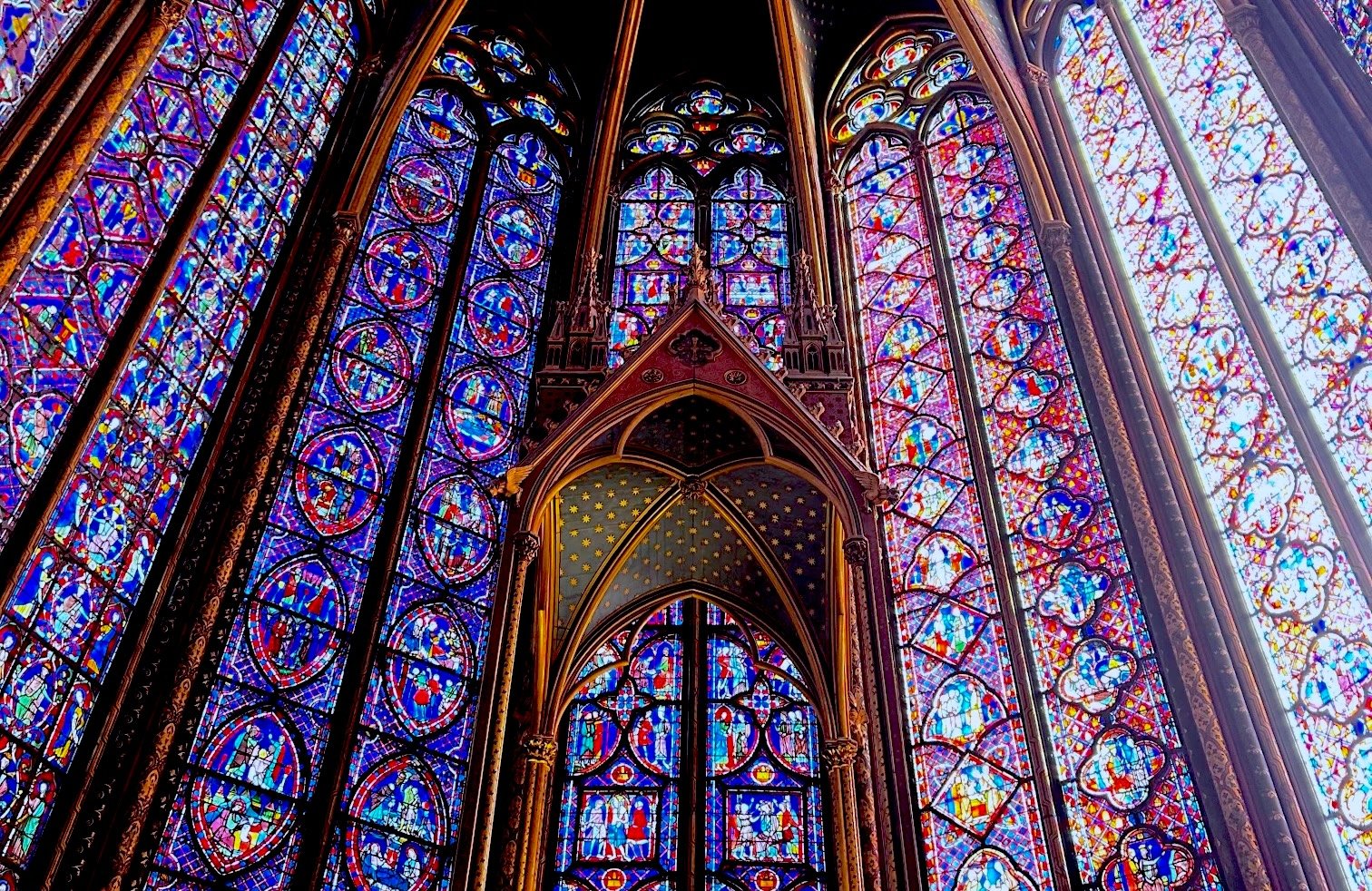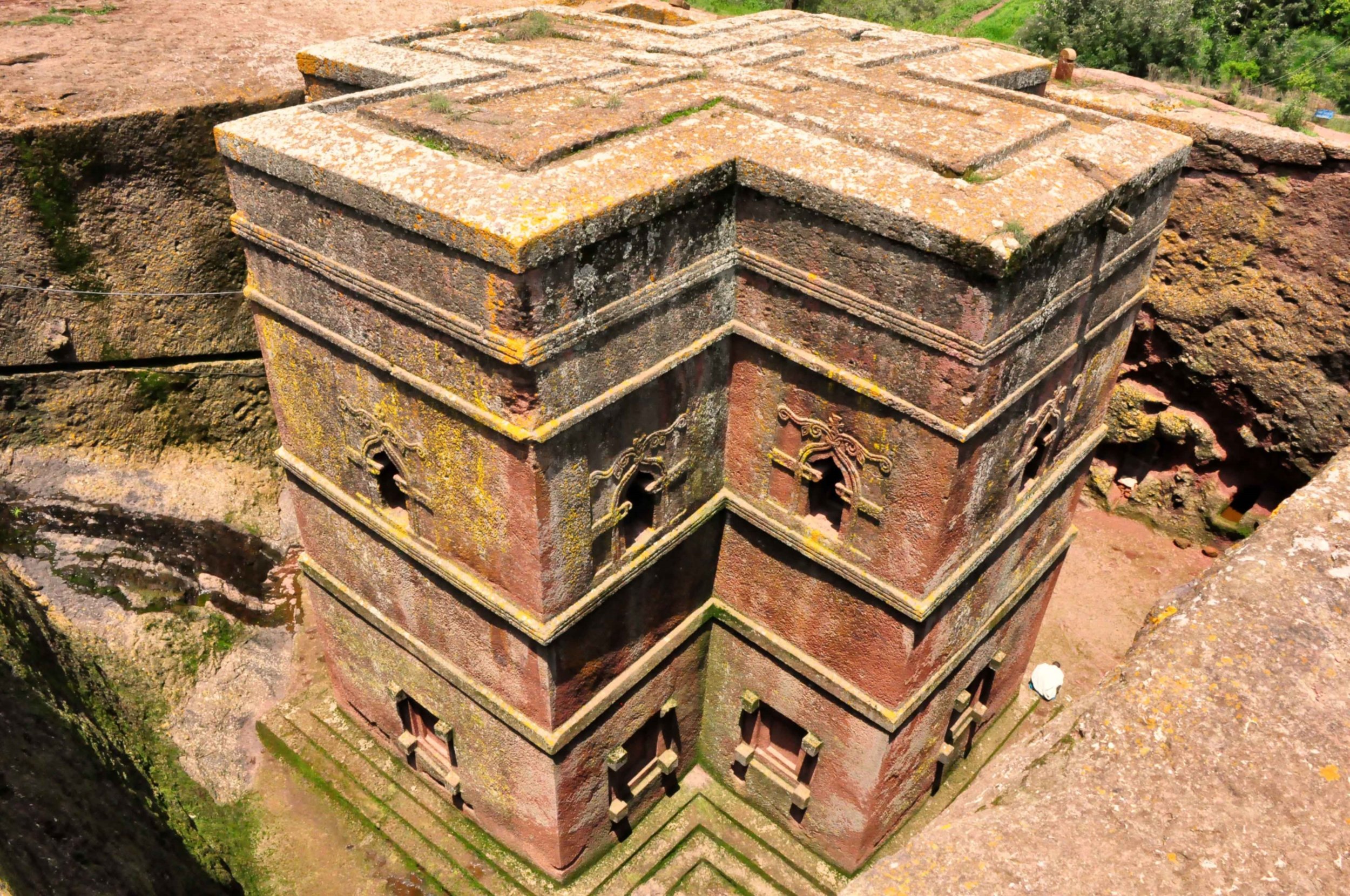The Oriental Orthodox Churches
Photograph: A church cathedral in Egypt. Photo credit: Bild von abdelazizmagdy40 | Pixabay
Introduction
The selection of perspectives focus on issues of church unity concerning the Oriental Orthodox Churches, which upheld the Miaphysite language of Jesus’ one “physis” while the pro-Chalcedonian Churches (Constantinople and Rome) upheld two “physeis.” The selections below are scholarly studies of the six traditions: Syrian, Armenian, Egyptian, Ethiopian, Eritrean, Indian.
Resources on the Oriental Orthodox Churches, General:
Isfahan Christians in Iran (Iran Gazette)
Saint Ephrem Ecumenical Research Institute (website) in Kerala, India; specializing in Syriac studies
Faculty of Oriental Studies, Oxford (website) includes Sebastian Brock and David Taylor
Ahdy Rofaeil, What Hinders the Full Communion between the Coptic Orthodox and the Eastern Orthodox (Master’s Thesis, Institute of the Orthodox Christian Studies, Cambridge Theological Federation | Academia.edu)
Nicholas Marinides, Chalcedonian Orthodoxy and Non-Chalcedonian Heterodoxy. Ancient Faith, Apr 12, 2016. Response by Coptic Orthodox writer, Mina Soliman, Response to Nicholas Marinides on Non-Chalcedonian Christology. Ancient Faith, Apr 14, 2016. Reply from Nicholas Marinides, Follow-up from Nicholas Marinides on Non-Chalcedonian Christology. Ancient Faith, Apr 15, 2016.
Lewis Ayres, The Christology of Justinian. Sheptytsky Institute, Jul 16, 2022. An examination of the Fifth Ecumenical Council 553 and its dogmatic formula. Draws heavily on Cyril of Alexandria. Justinian also drew on the language of Severus of Antioch, who was opposed to Chalcedon 451, to build bridges.
Armenian Apostolic Church:
Abel Abrahamian, The Church and Faith in Armenia. The Faith Press | Archive page, 1920.
Karekin Sarkissian, The Council of Chalcedon and the Armenian Church. SPCK | Amazon page, Jan 1965.
Vreg Nersessian, The Bible in the Armenian Tradition. J. Paul Getty Museum | Amazon page, Jun 2001.
Michael B. Papazian and Archbishop Oshagan Choloyan, Light From Light: An Introduction to the History and Theology of the Armenian Church. SIS Publications | Amazon page, Jan 2006.
Edward Francis Knottesford Fortescue and Solomon Caesar Malan, The Armenian Church, Founded By St. Gregory The Illuminator: Being A Sketch Of The History, Liturgy, Doctrine, And Ceremonies Of This Ancient National Church. Palala Press | Amazon page, Dec 2015.
Jasmine Dum-Tragut and Deitmar W. Winkler, Monastic Life in the Armenian Church: Glorious Past - Ecumenical Reconsideration. LIT Verlag | Amazon page, Jan 2020.
Richard E. Antaramian, Brokers of Faith, Brokers of Empire: Armenians and the Politics of Reform in the Ottoman Empire. Stanford University Press | Amazon page, 2020. examines the role of clergy and laity of Armenians under the Ottoman Empire, and subsequently in the reforms of the 19th century.
Egyptian Coptic Orthodox Church of Alexandria:
The Coptic Church of Egypt. Coptic website.
Ambrose Andreano, The Desert Fathers (Patristics Project. re: the Egyptian Christian monastic movement which later spread throughout the world and became the Orthodox monasteries and Catholic orders, and even Protestant parachurches.
Wikipedia, Moses the Black (Wikipedia article) 330 - 405 AD.
Otto F.A. Meinardus, Monks and Monasteries of the Egyptian Desert. The American University in Cairo Press | Amazon page, Feb 1, 1989.
Otto F.A. Meinardus, Two Thousand Years of Coptic Christianity. The American University in Cairo Press | Amazon page, 1999.
Haggai Erlich, The Cross and the River: Ethiopia, Egypt, and the Nile. Lynne Rienner Publishers, Inc. | Amazon page, 2001, 2014. A history involving competing claims on the Nile and the role of the Christian churches in both countries.
Massimo Capuani, Christian Egypt: Coptic Art and Monuments Through Two Millennia. Liturgical Press | Amazon page, Sep 1, 2002.
Luis M. Farag, The Coptic Christian Heritage: History, Faith and Culture. Routledge | Amazon page, Dec 2013.
Abba Abraham Buruk Woldegaber and Mario Alexis Portella, Abyssinian Christianity: The First Christian Nation? The History and the Identity of the Ethiopian and Eritrean Christians. Brendan Pringle Editing | Amazon page, 2012.
Philip Jenkins, Shenoute the Great. Patheos, Aug 9, 2013. Shenoute was the 4th century Coptic leader of the White Monastery in Upper Egypt.
John R. Gresham, Jr., Athanasius: Relevance in the Black Church Today. The Modern Monastic Order of Saint Simon of Cyrene blog, Jun 26, 2014.
Vince Bantu, Is Christianity the White Man's Religion? Jude3 Project, Jun 20, 2016. about Christianity in Egypt from the 2nd to 7th centuries.
Father Antony Paul, Chalcedonian and Coptic Orthodox: History, Similiarities, and Differences. Holy Transfiguration American Coptic American Church, Nov 20, 2016. a 50 minute Youtube video; helpful summary of the history of the 5th century; helpful comments about the term "monophysite" and why the Copts do not use the term "theosis," as the Eastern Orthodox do, because of their context in Islam.
Vince Bantu, Mis-Reformed, the Imperialism of Reformed Theology. Urban Perspective, Feb 18, 2018.
Eritrean Tewahedo Orthodox Church:
Abba Abraham Buruk Woldegaber and Mario Alexis Portella, Abyssinian Christianity: The First Christian Nation? The History and the Identity of the Ethiopian and Eritrean Christians. Brendan Pringle Editing | Amazon page, 2012.
Mario Alexis Portella, Ethiopian and Eritrean Monasticism: The Spiritual and Cultural Heritage of Two Nations. Brendan Pringle Editing | Amazon page, 2015. remarkable history of how Ethiopian Christians interacted with European counterparts from the 5th century to the Council of Florence in 1441, served as a rallying point for Ethiopian ethnic and national identity against the Portuguese Jesuits in the 17th century, and the Italian fascist invasion of 1935.
Ethiopian Tewahedo Orthodox Church:
Wikipedia, Ezana of Axum (Wikipedia article) 320's - 360 AD, first Christian king of Ethiopia.
Wikipedia, Abuna Yemata Guh (Wikipedia article) re: the Ethiopian monolithic rock churches in the northern, Tigray region of Ethiopia, hewn from the sixth century, honoring the Nine Saints (Wikipedia article) from Rome, Constantinople, and Antioch, and decorated with Ethiopian mosaics dating back to the fifteenth century.
Raymond Davis, Fire on the Mountains: The Story of a Miracle – the Church in Ethiopia. Sudan Interior Mission | Amazon page, 1966.
Aymro Wondmagenehu and Joachim Motovu, The Ethiopian Orthodox Church. Ethiopian Orthodox Mission | Amazon, 1970.
Steve Kaplan, The Monastic Holy Man and the Christianization of Early Solomonic Ethiopia. Coronet Books | Amazon page, 1984.
David W. Phillipson, Ancient Churches of Ethiopia. Yale University Press | Amazon page, 2009. see also Ezana (Abreha). Ancient World History website.
Tekletsadik Belachew, “From Abba Salama to King Lalibela: Christian Traditions in Ethiopia are among the Oldest in the World”. Christian History Magazine, 2013.
Seraphim Danckaert, BBC Documentary on Ethiopian Orthodox Christianity. Orthodox Christian Network, Jun 25, 2014.
Mario Alexis Portella, Ethiopian and Eritrean Monasticism: The Spiritual and Cultural Heritage of Two Nations. Brendan Pringle Editing | Amazon page, 2015. remarkable history of how Ethiopian Christians interacted with European counterparts from the 5th century to the Council of Florence in 1441, served as a rallying point for Ethiopian ethnic and national identity against the Portuguese Jesuits in the 17th century, and the Italian fascist invasion of 1935.
Daniel Assefa and Tekletsadik Belachew, “Values Expressed through African Symbols: An Ethiopian Theological Reflection.” International Bulletin of Mission Research. Sagepub Journal, 2017. A study of symbolism, poetry, hymns and chants.
Haile Getatchew, The Ethiopian Orthodox Church's Tradition on the Holy Cross. Brill | Amazon page, 2017. theological and liturgical material reflecting on the crucifixion of Jesus.
Thomas C. Oden, The Songs of Africa: The Ethiopian Canticles. ICCS Press | Amazon page, 2017. Tracing this early musical notation format to modern jazz.
Christian C. Sahner, Discoveries in the Ethiopian Desert. Marginalia, Mar 17, 2017. Re: the Ethiopian Garima Gospels manuscripts.
Ralph Lee, Symbolic Interpretations in Ethiopic and Early Syriac Literature. Peeters Publisheres | Amazon page, Oct 18, 2017. Lee explores the influence of Syrian Christianity on Ethiopian Christianity in the earliest centuries.
Philip F. Esler, Ethiopian Christianity: History, Theology, Practice. Baylor University Press | Amazon page, 2019.
Bruh Ayele Asale, 1 Enoch as Christian Scripture: A Study in the Reception and Appropriation of 1 Enoch in Jude and the Ethiopian Orthodox Tewahǝdo Canon. Pickwick Publishing | Amazon page, Jun 2020.
Dirshaye Menberu, Estifanos of Ethiopia. Dictionary of African Christian Biography. Estifanos (1380 - c.1450 AD) was an Ethiopian scholar and reformer of the Ethiopian Church who bears curious resemblances to the European Protestant Reformers.
Wikipedia, Walatta Petros (Wikipedia article) (1592 - 1642) one of the 21 female saints in the Ethiopian Orthodox Church; Petros is celebrated for resisting the influence of Roman Catholicism in Ethiopia.
Wikipedia, Giyorgis of Segla (Wikipedia article) (c.1365 - 1425) an important Ethiopian Orthodox writer in the 15th century.
Indian Orthodox Malankara Church:
Rev. Mar Thomas Athanasius, The Indian Christians of St. Thomas: The Syrian Christians of Malabar. Archive, 1908.
A. Mathias Mundadan, History of Christianity in India: From the Beginning Up to the Middle of the Sixteenth Century. Up to 1542. Church History Association of India | Amazon page, Jan 1989.
Robert Eric Frykenberg, Christianity in India: From Beginnings to the Present. Oxford University Press | Amazon page, 2008.
Richard Fox Young, India and the Indianness of Christianity: Essays on Understanding -- Historical, Theological, and Bibliographical — in the History of Christian Missions. Eerdmans | Amazon page, 2009.
Ian Gillman and Hans-Joachim Klimkeit, Christians in Asia Before 1500. Routledge | Amazon page, Jun 2016.
Syrian Orthodox Church:
Peter Theodore Farrington, The Orthodox Christology of St. Severus of Antioch (Orthodox Wiki article)
Isfahan Christians (Iran Gazette) begins with Arbela and Nisibis in the Eastern Mesopotamian region
Gregory Bar-Hebraeus, The Ecclesiastical Chronicle. Gorgias Press | Amazon page. translated by David Wilmhurst. Gorgias Press, the publisher, writes, “The Ecclesiastical Chronicle of the Syriac Orthodox polymath Bar Hebraeus (†1286), an important Syriac text written in the last quarter of the 13th century, has long been recognised as a key source for the history of the Syriac Orthodox Church and the Church of the East.” See also Bar Hebraeus, Laughable Stories (Free Amazon Kindle book) translated by E.A. Wallis Budge; a collection of stories.
Laurence Brown, The Eclipse of Christianity in Asia From the Time of Muhammed Till the Fourteenth Century. University of Cambridge Press | Amazon page, 1933.
Arthur Vööbus, History of Asceticism in the Syrian Orient: A Contribution to the History of Culture in the Near East. Vol. 1, The Origin of Asceticism: Early Monasticism in Persia. Secrétariat du CorpuSCO | Amazon page, 1958.
Arthur Christopher Moule, Christians in China Before the Year 1550. Octagon Books | Amazon page, Jun 1972.
Robert M. Haddad, Syrian Christians in Muslim Society: An Interpretation. Praeger | Amazon page, 1981.
H.J.W. Drijvers, East of Antioch: Studies in Early Syriac Christianity. Variorum Books | Amazon page, Jan 1984.
Sebastian Brock, The Syriac Fathers on Prayer and the Spiritual Life. Liturgical Press | Amazon page, Nov 1987.
Sebastian Brock, The Luminous Eye: The Spiritual World Vision of Saint Ephrem the Syrian. Cistercian Publications | Amazon page, Feb 1992. examines the great poetic theologian Ephrem the Syrian.
Sebastian Brock and John Behr, Treasure-House of Mysteries: Explorations of the Sacred Text Through Poetry in the Syriac Tradition. St. Vladimir’s Seminary Press | Amazon page, Nov 1992. Brock and Behr examine how the Syriac fathers poetically explored and imagined the biblical text.
Bat Ye’or, The Decline of Eastern Christianity Under Islam: From Jihad to Dhimmitude. Fairleigh Dickinson University Press | Amazon page, 1996.
Alfayev Hilarion, The Spiritual World of Isaac the Syrian. Liturgical Press | Amazon page, Jun 2000.
Giacomo Pezzali and Transworld Film Italia, The Hidden Pearl: The Syrian Orthodox Church and Its Ancient Aramaic Heritage. Suryoyo Aram, 2001. consultation provided by Sebastian Brock and David Taylor.
Aho Shemunkasho, Healing in the Theology of Saint Ephrem. Gorgias Press | Amazon page, 2nd edition 2002.
Seely J. Beggiani, Introduction to Eastern Christian Spirituality: The Syriac Tradition. University of Scranton Press | Amazon page, 2005. introduces major writers and ascetics of the Syriac church.
Sebastian Brock, The Wisdom of Isaac of Nineveh: A Bilingual Edition. Gorgias Press | Amazon page, 2006.
Sebastian Brock, Fire from Heaven: Studies in Syriac Theology and Liturgy. Routledge | Amazon page, 2006. Brock’s fourth collection focuses on three areas: the christology of the Church of the East, the distinctive phraseology of the invocations to the Holy Spirit in the Syriac liturgical tradition, and two important early Commentaries on the Liturgy.
Sebastian Brock, The Bible in the Syriac Tradition. Gorgias Press | Amazon page, Dec 2006.
Adam H. Becker, Fear of God and the Beginning of Wisdom: The School of Nisibis and the Development of Scholastic Culture in Late Antique Mesopotamia. University of Pennsylvania Press | Amazon page, Jun 2006. Becker provides a history of the School of Nisibis and the culture of the Church of the East during late antique and early Islamic periods, which was very important in dialogue with synagogues and mosques.
Brian E. Colless, The Wisdom Of The Pearlers: An Anthology of Syriac Christian Mysticism. Liturgical Press | Amazon page, Apr 2008.
Robert Miller, Syriac and Antiochian Exegesis and Biblical Theology for the 3rd Millennium. Gorgias Press | Amazon page, Dec 2008. Miller explores the exegetical patterns of the School of Antioch, which can still be of use in historical-critical biblical scholarship.
Alphonse Mingana, The Early Spread of Christianity in Central Asia and the East: A New Document. Gorgias Press | Amazon page, Jun 2010.
Mary Cunningham, Why Study the Orthodox Churches of the East. University of Nottingham, Oct 4, 2011. Coptic; Ethopic; Armenian; Georgian; Syrian; Indian. The Syrian tradition produced a wealth of poetic and liturgical materials from the 4th - 6th centuries, probably influenced Greek hymnography and liturgy from the 5th century onward. The Didache, which is in one Greek manuscript, survives in Georgian and Coptic.
Father Samuel Issa, Why Study the Syrian Orthodox Church. University of Nottingham, Jun 19, 2012. on the Syriac language; Syrian Christian monasticism which was unusual because it was lived in the midst of ordinary communal life (described by Aphrahat, Demonstrations 6 - 7); and Ephrem the Syrian (a theologian who was one of the finest of all Syriac poets).
Kristian S. Heal and Robert A. Kitchen, Breaking the Mind: New Studies in the Syriac Book of Steps. Catholic University of America Press | Amazon page, Dec 2013.
Seraphim Danckaert, BBC Documentary on Ethiopian Orthodox Christianity. Orthodox Christian Network, Jun 25, 2014.
Robert A. Kitchen, translator, The Discourses of Philoxenos of Mabbug: A New Translation and Introduction. Liturgical Press | Amazon page, 2014.
Seely J. Beggiani, Early Syriac Theology: With Special Reference to the Maronite Tradition. Catholic University of America Press | Amazon page, second edition Jan 2014. Reggiani focuses on Syriac fathers of the fourth, fifth, and sixth centuries such as Ephrem the Syrian and Jacob of Serugh.
Richard E. Payne, A State of Mixture: Christians, Zoroastrians, and Iranian Political Culture in Late Antiquity. University of California Press | Amazon page, 2015.
Michael Philip Penn, Envisioning Islam: Syriac Christians and the Early Muslim World. University of Pennsylvania Press | Amazon page, 2015.
Jeanne-Nichole Mellon Saint-Laurent, Missionary Stories and the Formation of the Syriac Churches. University of California Press | Amazon page, 2015.
Kyle Smith, Constantine and the Captive Christians of Persia: Martyrdom and Religious Identity in Late Antiquity. University of California Press | Amazon page, 2016.
Joseph Yacoub, Year of the Sword: The Assyrian Christian Genocide, A History. Oxford University Press | Amazon page, Nov 2016. While “the Armenian genocide of 1915 has been well documented, much less known is the Turkish genocide of the Assyrian, Chaldean and Syriac peoples, which occurred simultaneously in their ancient homelands in and around ancient Mesopotamia - now Turkey, Iran and Iraq.”
Christoph Baumer, The Church of the East: An Illustrated History of Assyrian Christianity. I.B. Tauris | Amazon page, Nov 5, 2016.
Geoffrey Herman, Persian Martyr Acts under King Yazdgird I. Gorgias Press | Amazon page, Nov 2016. Herman examines five narratives of fifth century Persian Christian martyrs.
Sebastian Brock, The Syriac Tradition and East-West Christian Ecumenism. Heythrop College, Jul 26, 2018.
Christian C. Sahner, Christian Martyrs under Islam: Religious Violence and the Making of the Muslim World. Princeton University Press | Amazon page, 2018. Sahner focuses on the Middle Ages and the transition from a majority Christian to a majority Muslim population in the Middle East.
Sebastian Brock, The People and the Peoples: Syriac Dialogue Poems from Late Antiquity. Journal of Jewish Studies | Amazon page, Feb 2020. examines the dialogue and debate between Syriac Christians and Jewish synagogues.
Daniel King, editor, The Syriac World. Routledge | Amazon page, Dec 2018. from the second century to today; essays on the religion, culture (material, visual, and literary), history, social structures, and interactions with neighbors.
Church Unity: Topics:
This page is part of our section on Church Unity which concerns the Assyrian Church of the East, which separated over the Council of Ephesus in 431, the Oriental Orthodox Churches, which separated over the Council of Chalcedon of 451, the Catholic-Orthodox split of 1054, and the Protestant Churches beginning 1517.
The Church: Topics:
This section on the Church is organized from formal theology to practical expression. Holy Spirit includes messages and reflections on the Holy Spirit, including the Spirit’s gifts. Pentecost examines Jesus redeeming not only individuals but languages, relations, and cultures, which carries political implications as well. Church and Language highlights the nature of human language, including its political uses, and Christian engagement. Church and Mission spotlights the history of Christian mission as well as resources for today’s Christian mission movement. Church and Women presents resources supporting women in all levels of church leadership. Church and Empire explores the positive and negative patterns of Christians and political power. Myth of Christian Ignorance confronts the Western accusation that Christian faith stunted the growth of Western culture and institutions. Church Unity maintains resources related to the major issues which have concerned the Assyrian Church of the East, the Oriental Orthodox, the Catholic-Orthodox split, and the Protestant split. Church and Friendship focuses on practical expressions of community and reflects on the conditions for and against friendship, largely in the U.S.

